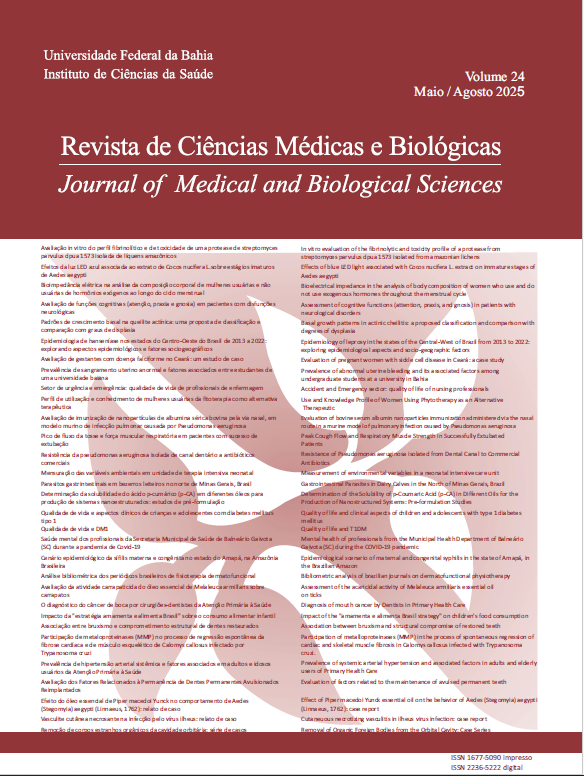Quality of life and clinical aspects of children and adolescents with type 1 Diabetes Mellitus
Quality of life and T1DM
Keywords:
Diabetes; quality of life; child; adolescent.Abstract
INTRODUCTION: Type 1 Diabetes Mellitus (DM1) is considered a chronic disease, its increase is about 3% per year. The changes needed to manage the disease directly reflect on the perception of the patient's quality of life, in addition to the living conditions that can support the health conditions and related treatments. OBJECTIVE: To analyze the relationship between clinical aspects and quality of life in children and adolescents with DM1. METHOD: Sixty-nine patients of both genders, diagnosed with DM1 for at least one year, participated in the study. Quality of life was assessed using the ViDa1 questionnaire. For all analyses, the SPSS software version 19.0 for Windows was used, with a significance level of 5%. RESULTS: The average age of the research participants was 12.7. The mean time since diagnosis was 5.12 years. The average HbA1c of 8.86. The median value of the quality-of-life dimensions was 25.0 for interference in your life, 43.0 for self-care, 22.0 for well-being and 17 for concerns about the disease. A positive correlation was observed between HbA1c and interference with life. The self-care domain showed a negative correlation with the percentage of fat. CONCLUSION:Concern about the disease was the domain with the greatest negative impact on quality of life. The increase in HbA1c was related to greater interference with life and worsening self-care, negatively impacting these areas. The increase in the percentage of fat was significantly related to the worsening of the perception of self-care.
Downloads
Downloads
Published
How to Cite
Issue
Section
License
Copyright (c) 2025 Journal of Medical and Biological Sciences

This work is licensed under a Creative Commons Attribution 4.0 International License.
The Journal of Medical and Biological Sciences reserves all copyrights of published works, including translations, allowing, however, their subsequent reproduction as transcription, with proper citation of source, through the Creative Commons license. The periodical has free and free access.


